【声明】
欢迎转载,但请保留文章原始出处→_→
生命壹号:http://www.cnblogs.com/smyhvae/
文章来源:http://www.cnblogs.com/smyhvae/p/4026782.html
【正文】
【开发环境】
物理机版本:Win 7旗舰版(64位)
MySQL版本:5.5.40MSI版(64位)
一、数据库类型:
(1)关系数据库
(2)面向对象数据库
(3)XML数据库
现在的主流是关系型数据库。
二、数据库产品:
- 大型数据库有:Oracle、Sybase、DB2、SQL server
- 小型数据库有:MySQL、Access等
上面列举的数据库都是关系型数据库,只是Oracle中有一小部分是面向对象的。MySQL具有开源、免费等特性,适合中小型企业的开发。
三、关系型数据库的基本概念:
关系型数据库是由多个表(table)和表之间的关联关系组成的数据的集合,表是一个由若干行、若干列组成的二维的关系结构。

上图中,表的列称为字段(field),表的行成为记录(record)。字段是表的结构,记录是表的数据。
四、MySQL的下载:
官网下载地址:http://www.mysql.com/:


上图中,可以看到MySQL有三个版本:企业版、集群版、社区版。社区版就是我们所需要的版本,GPL是一种开源的协议。点击上图中红框中的链接,进入另外一个界面:

上图中,我们选择红框部分的社区版本进行下载,弹出如下界面:
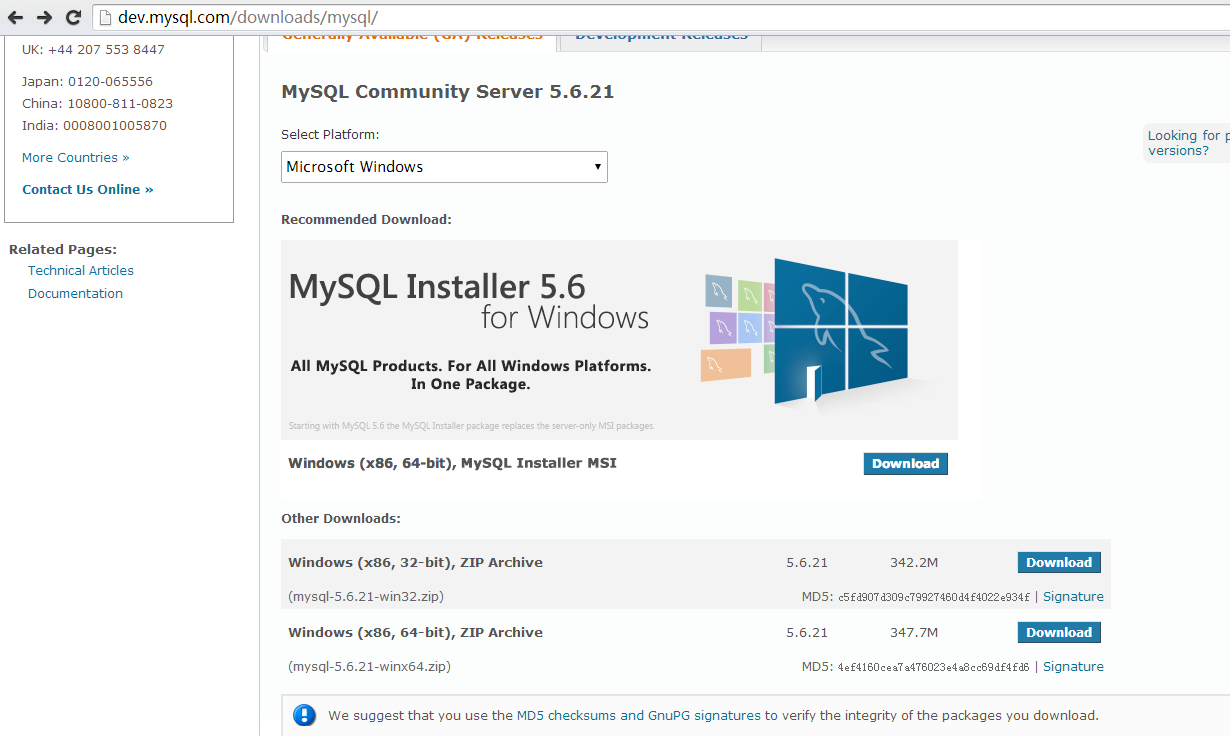
下图中,可以看到MySQL支持许多平台:
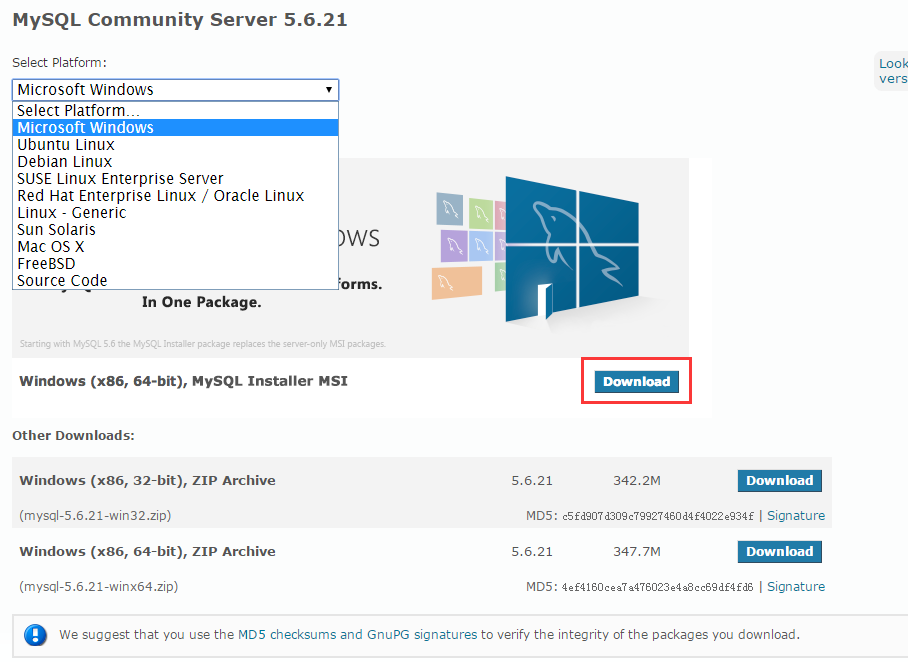
我的操作系统是64位的,我选择对应版本(MSI版)进行下载,点击上图中红框部分的链接,进入如下界面:
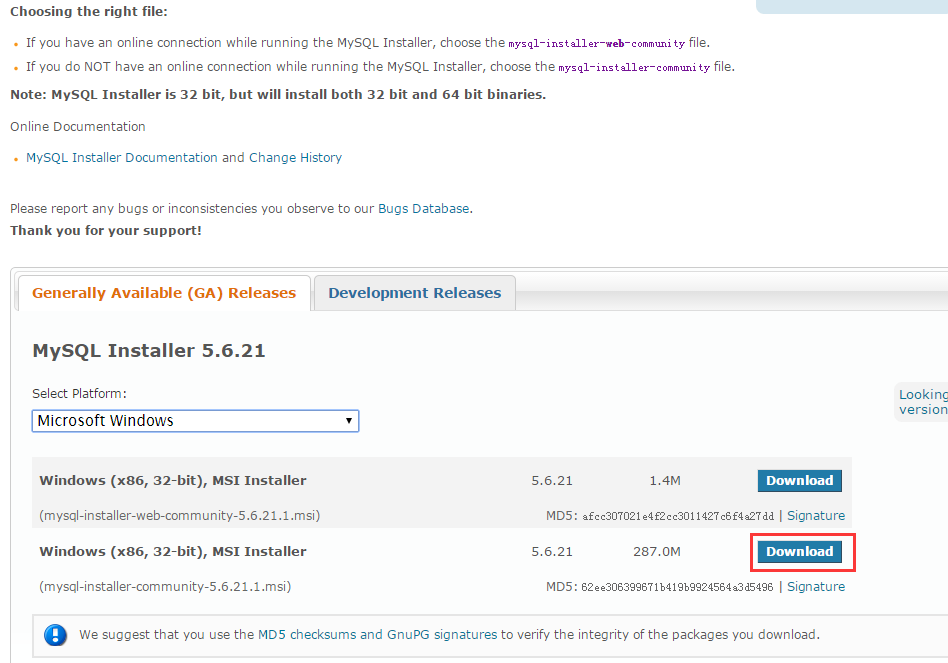
上图中,点击红框部分进行下载,弹出如下界面:
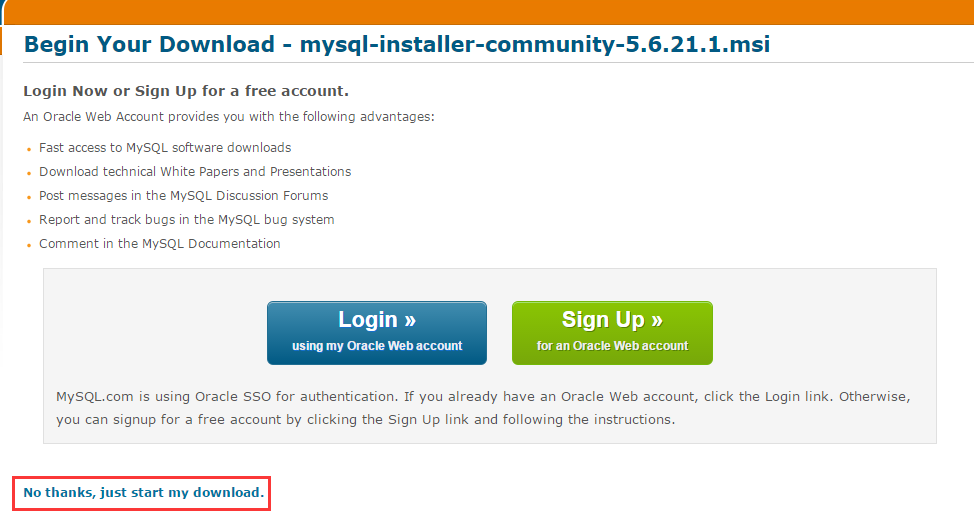
上图中,我们不需要注册,点击红框部分,直接下载即可。
五、MySQL的安装:
双击安装包时,出现了这个错误:
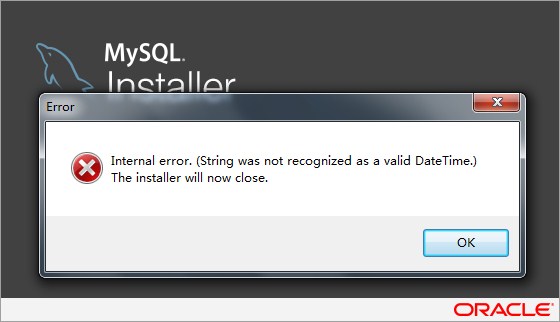
好吧,没想到官网下载的软件都能出问题。算了,我还是下老版本的吧。
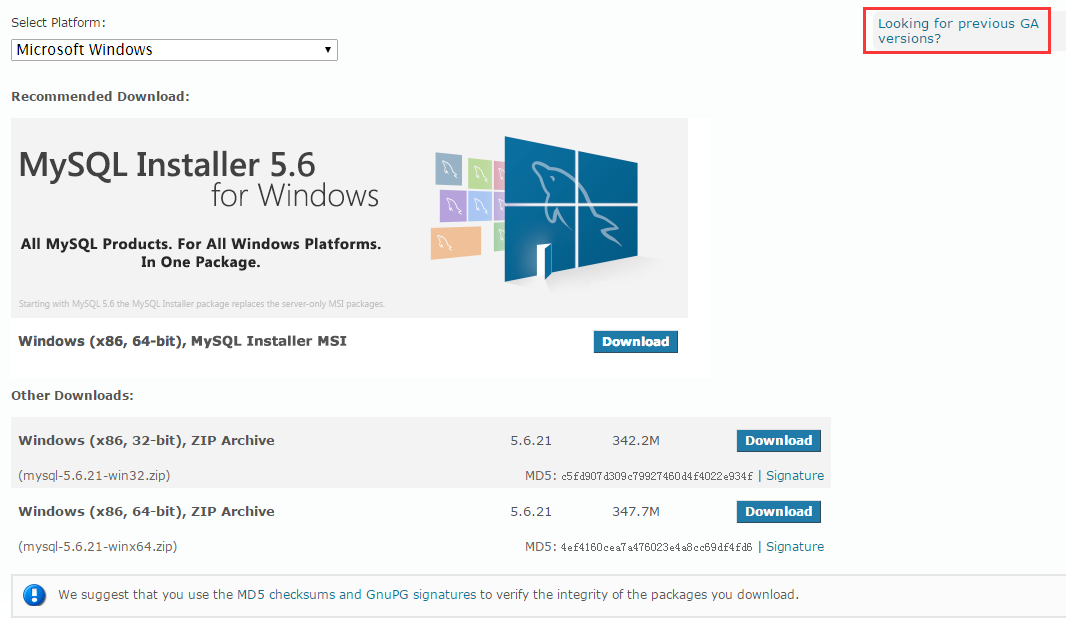
点击上图中红框部分,弹出如下界面:
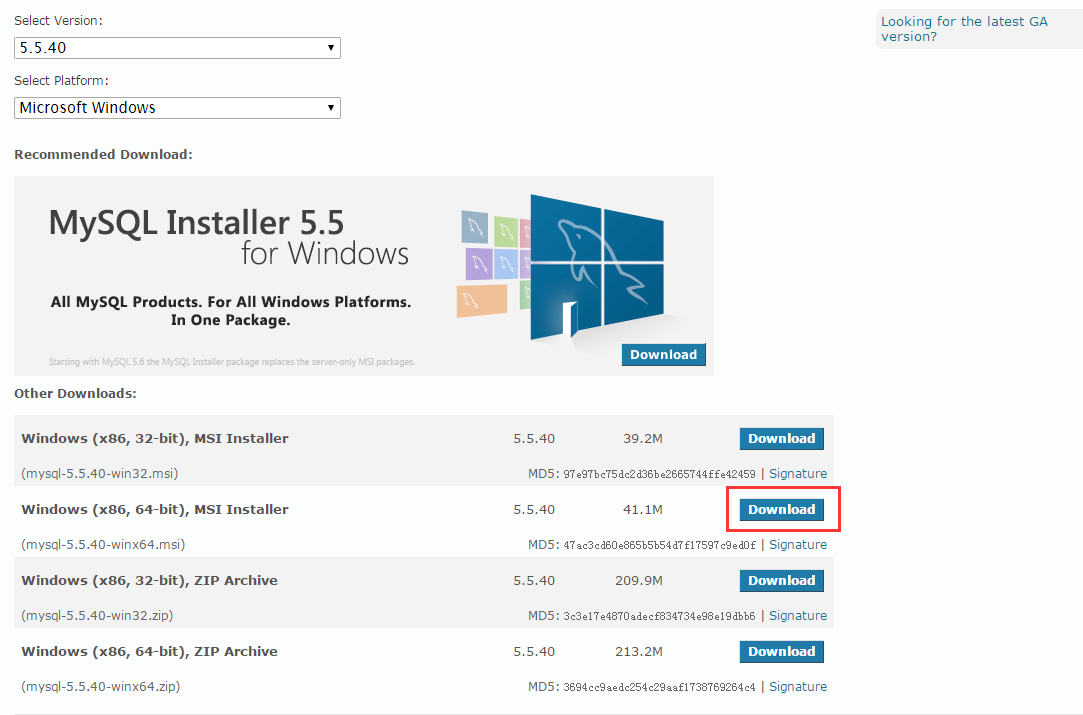
上图中,点击红框部分,弹出如下界面:
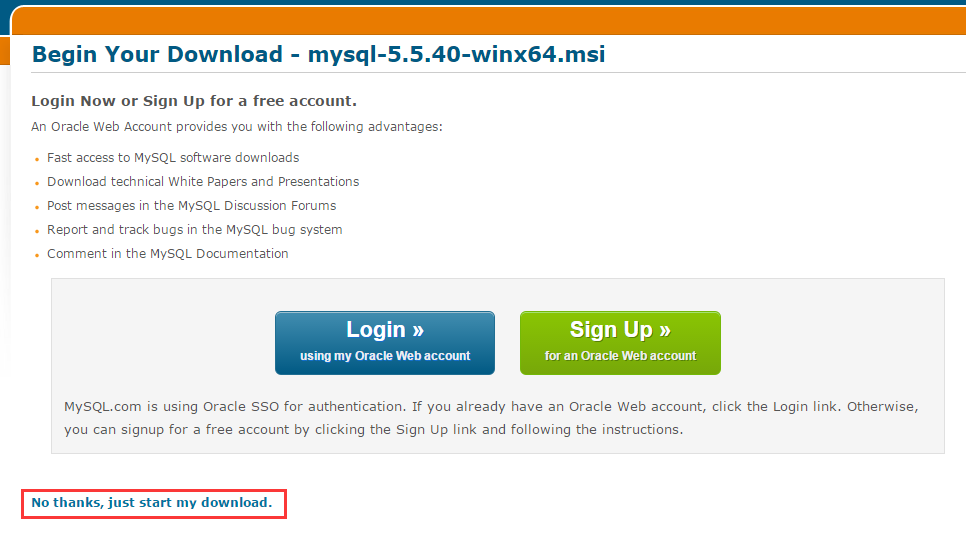
不用注册,直接下载吧。。。
五、MySQL的安装:
软件下载完成后,就开始安装吧。


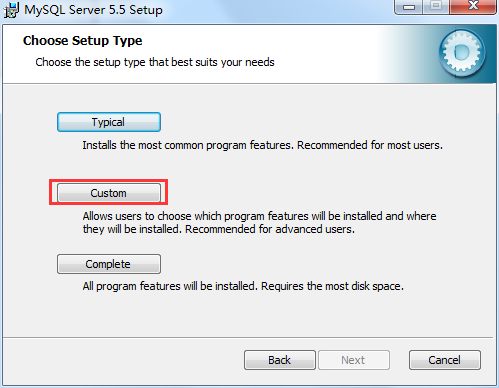
上图中,建议选择第二项的Custom,自定义安装。弹出如下界面:

上图中,选择合适的安装路径,点击“继续”:


之后跳出另一个对话框,是让我们安装一个可视化的工具:
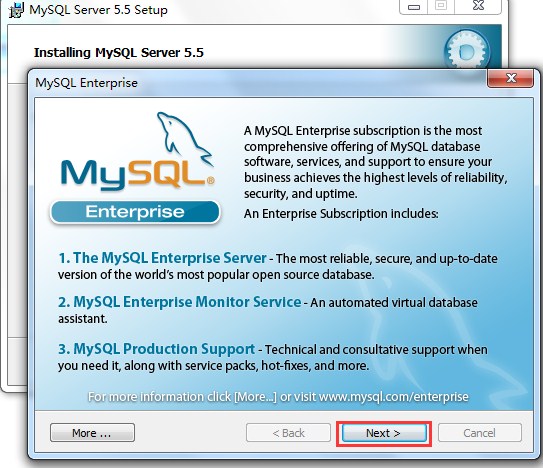
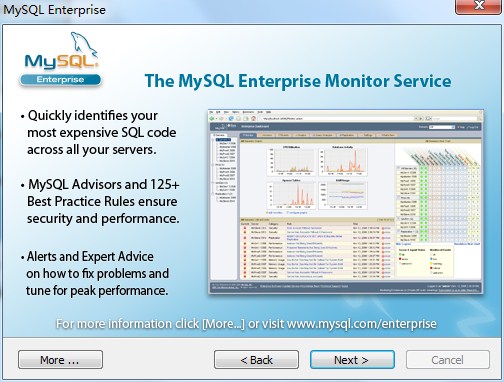
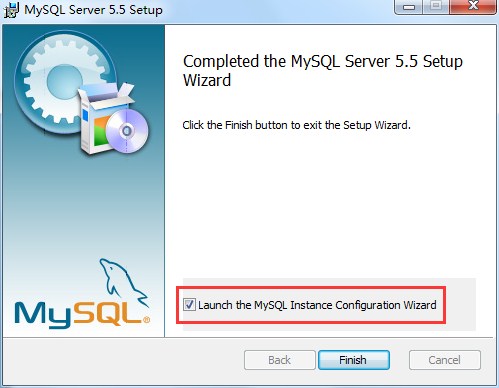
上图中,我们勾选红框部分,然后点击“finish”,进行配置。
六、MySQL的配置:
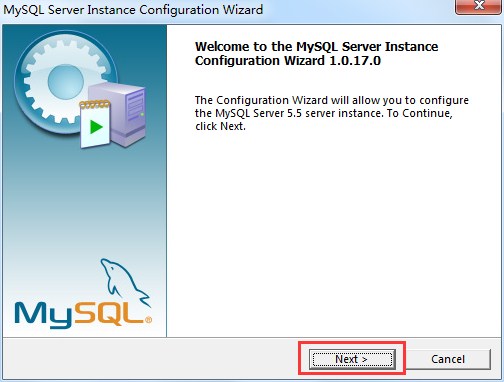
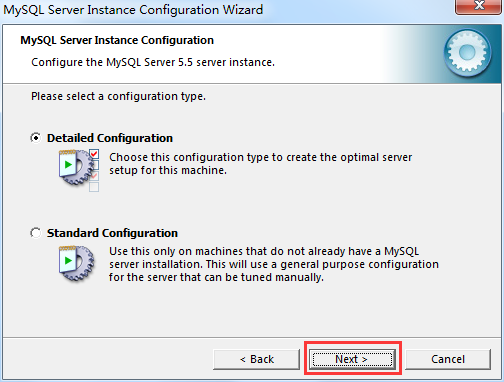

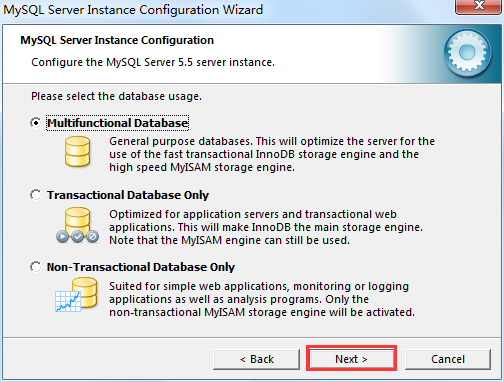
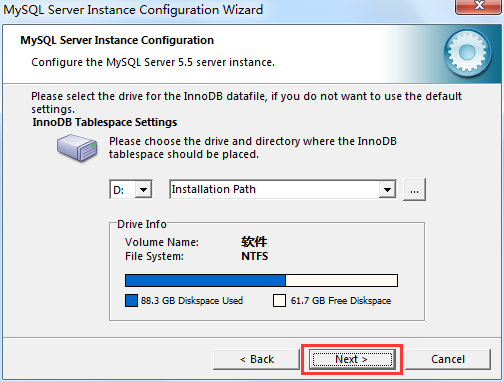
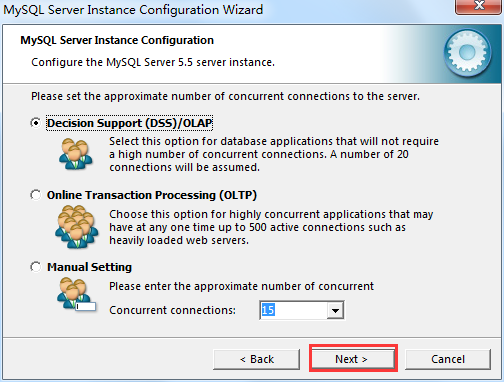
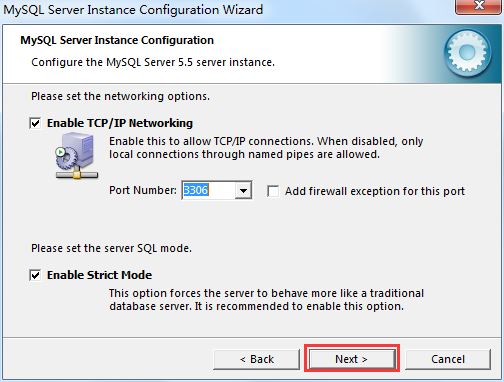
上图的解释:今后在Java开发中,要对这个服务器进行访问,就要涉及到通信的协议,这里使用TCP/IP协议,此时就涉及到了端口,MySQL默认的端口号为3306,使用默认的即可。继续下一步:
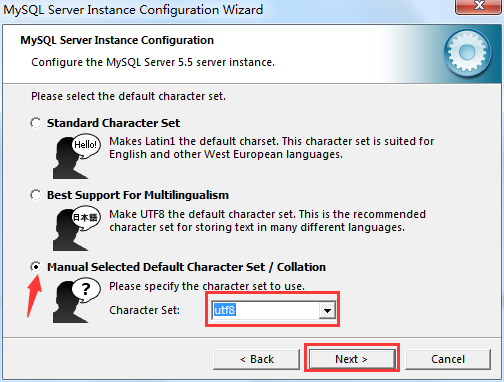
上图中,是选择数据库的编码。第一种是拉丁文,只支持英文,不支持中文;第二种貌似是和日语有关的。这里我们选择第三种:自定义。然后将编码方式设置为:utf-8。下一步:
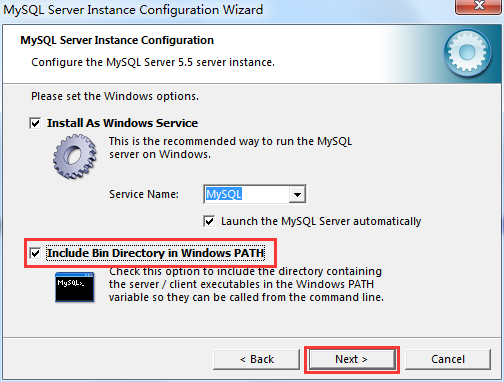
上图中,我们勾选“路径添加到环境变量”,然后继续:
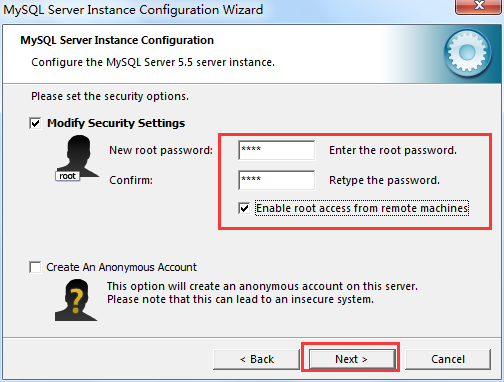
上图中,是给root用户设置密码。这里,我将密码设置为smyh。另外,勾选“允许用户远程(网路)访问”,否则只能在本地访问,继续:
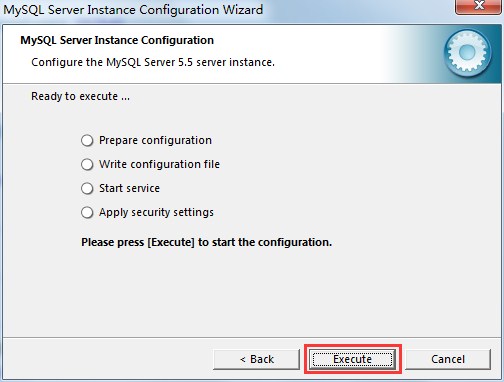
上面的勾会自动打的:

上图中,可以看到,我们的配置被写在了my.ini这个文件中了。

点击finish,完成安装。我们再到对应目录下看一下my.ini文件的内容:

# MySQL Server Instance Configuration File # ---------------------------------------------------------------------- # Generated by the MySQL Server Instance Configuration Wizard # # # Installation Instructions # ---------------------------------------------------------------------- # # On Linux you can copy this file to /etc/my.cnf to set global options, # mysql-data-dir/my.cnf to set server-specific options # (@localstatedir@ for this installation) or to # ~/.my.cnf to set user-specific options. # # On Windows you should keep this file in the installation directory # of your server (e.g. C:Program FilesMySQLMySQL Server X.Y). To # make sure the server reads the config file use the startup option # "--defaults-file". # # To run run the server from the command line, execute this in a # command line shell, e.g. # mysqld --defaults-file="C:Program FilesMySQLMySQL Server X.Ymy.ini" # # To install the server as a Windows service manually, execute this in a # command line shell, e.g. # mysqld --install MySQLXY --defaults-file="C:Program FilesMySQLMySQL Server X.Ymy.ini" # # And then execute this in a command line shell to start the server, e.g. # net start MySQLXY # # # Guildlines for editing this file # ---------------------------------------------------------------------- # # In this file, you can use all long options that the program supports. # If you want to know the options a program supports, start the program # with the "--help" option. # # More detailed information about the individual options can also be # found in the manual. # # # CLIENT SECTION # ---------------------------------------------------------------------- # # The following options will be read by MySQL client applications. # Note that only client applications shipped by MySQL are guaranteed # to read this section. If you want your own MySQL client program to # honor these values, you need to specify it as an option during the # MySQL client library initialization. # [client] port=3306 [mysql] default-character-set=utf8 # SERVER SECTION # ---------------------------------------------------------------------- # # The following options will be read by the MySQL Server. Make sure that # you have installed the server correctly (see above) so it reads this # file. # [mysqld] # The TCP/IP Port the MySQL Server will listen on port=3306 #Path to installation directory. All paths are usually resolved relative to this. basedir="D:/MySQL/MySQL Server 5.5/" #Path to the database root datadir="C:/ProgramData/MySQL/MySQL Server 5.5/Data/" # The default character set that will be used when a new schema or table is # created and no character set is defined character-set-server=utf8 # The default storage engine that will be used when create new tables when default-storage-engine=INNODB # Set the SQL mode to strict sql-mode="STRICT_TRANS_TABLES,NO_AUTO_CREATE_USER,NO_ENGINE_SUBSTITUTION" # The maximum amount of concurrent sessions the MySQL server will # allow. One of these connections will be reserved for a user with # SUPER privileges to allow the administrator to login even if the # connection limit has been reached. max_connections=100 # Query cache is used to cache SELECT results and later return them # without actual executing the same query once again. Having the query # cache enabled may result in significant speed improvements, if your # have a lot of identical queries and rarely changing tables. See the # "Qcache_lowmem_prunes" status variable to check if the current value # is high enough for your load. # Note: In case your tables change very often or if your queries are # textually different every time, the query cache may result in a # slowdown instead of a performance improvement. query_cache_size=0 # The number of open tables for all threads. Increasing this value # increases the number of file descriptors that mysqld requires. # Therefore you have to make sure to set the amount of open files # allowed to at least 4096 in the variable "open-files-limit" in # section [mysqld_safe] table_cache=256 # Maximum size for internal (in-memory) temporary tables. If a table # grows larger than this value, it is automatically converted to disk # based table This limitation is for a single table. There can be many # of them. tmp_table_size=34M # How many threads we should keep in a cache for reuse. When a client # disconnects, the client's threads are put in the cache if there aren't # more than thread_cache_size threads from before. This greatly reduces # the amount of thread creations needed if you have a lot of new # connections. (Normally this doesn't give a notable performance # improvement if you have a good thread implementation.) thread_cache_size=8 #*** MyISAM Specific options # The maximum size of the temporary file MySQL is allowed to use while # recreating the index (during REPAIR, ALTER TABLE or LOAD DATA INFILE. # If the file-size would be bigger than this, the index will be created # through the key cache (which is slower). myisam_max_sort_file_size=100G # If the temporary file used for fast index creation would be bigger # than using the key cache by the amount specified here, then prefer the # key cache method. This is mainly used to force long character keys in # large tables to use the slower key cache method to create the index. myisam_sort_buffer_size=68M # Size of the Key Buffer, used to cache index blocks for MyISAM tables. # Do not set it larger than 30% of your available memory, as some memory # is also required by the OS to cache rows. Even if you're not using # MyISAM tables, you should still set it to 8-64M as it will also be # used for internal temporary disk tables. key_buffer_size=55M # Size of the buffer used for doing full table scans of MyISAM tables. # Allocated per thread, if a full scan is needed. read_buffer_size=64K read_rnd_buffer_size=256K # This buffer is allocated when MySQL needs to rebuild the index in # REPAIR, OPTIMZE, ALTER table statements as well as in LOAD DATA INFILE # into an empty table. It is allocated per thread so be careful with # large settings. sort_buffer_size=256K #*** INNODB Specific options *** # Use this option if you have a MySQL server with InnoDB support enabled # but you do not plan to use it. This will save memory and disk space # and speed up some things. #skip-innodb # Additional memory pool that is used by InnoDB to store metadata # information. If InnoDB requires more memory for this purpose it will # start to allocate it from the OS. As this is fast enough on most # recent operating systems, you normally do not need to change this # value. SHOW INNODB STATUS will display the current amount used. innodb_additional_mem_pool_size=3M # If set to 1, InnoDB will flush (fsync) the transaction logs to the # disk at each commit, which offers full ACID behavior. If you are # willing to compromise this safety, and you are running small # transactions, you may set this to 0 or 2 to reduce disk I/O to the # logs. Value 0 means that the log is only written to the log file and # the log file flushed to disk approximately once per second. Value 2 # means the log is written to the log file at each commit, but the log # file is only flushed to disk approximately once per second. innodb_flush_log_at_trx_commit=1 # The size of the buffer InnoDB uses for buffering log data. As soon as # it is full, InnoDB will have to flush it to disk. As it is flushed # once per second anyway, it does not make sense to have it very large # (even with long transactions). innodb_log_buffer_size=2M # InnoDB, unlike MyISAM, uses a buffer pool to cache both indexes and # row data. The bigger you set this the less disk I/O is needed to # access data in tables. On a dedicated database server you may set this # parameter up to 80% of the machine physical memory size. Do not set it # too large, though, because competition of the physical memory may # cause paging in the operating system. Note that on 32bit systems you # might be limited to 2-3.5G of user level memory per process, so do not # set it too high. innodb_buffer_pool_size=106M # Size of each log file in a log group. You should set the combined size # of log files to about 25%-100% of your buffer pool size to avoid # unneeded buffer pool flush activity on log file overwrite. However, # note that a larger logfile size will increase the time needed for the # recovery process. innodb_log_file_size=53M # Number of threads allowed inside the InnoDB kernel. The optimal value # depends highly on the application, hardware as well as the OS # scheduler properties. A too high value may lead to thread thrashing. innodb_thread_concurrency=8
同时,我们在开始菜单的程序中也能看到已经安装好的程序了:

点击它,开始运行:
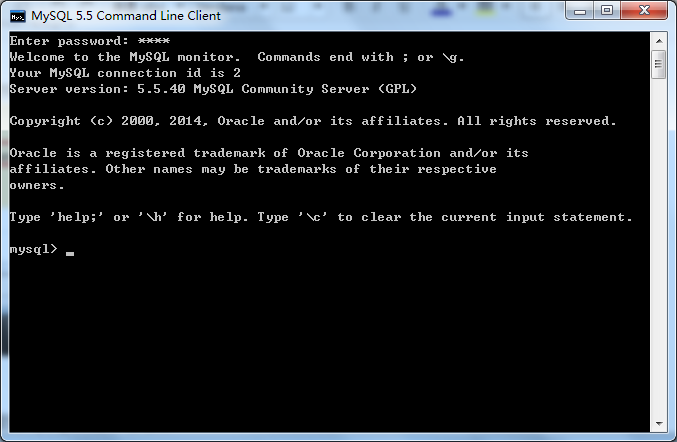
打开”计算机管理“可以看到MySQL的服务已启动:

同时在进程中也可以看到:

五、MySQL的卸载:
1、到控制面板里面先把mysql软件删除;
2、删除mysql的安装目录(如果在其他盘还有设置目录也要删除,空目录也要删除);
3、删除注册表中的以下文件:(按"Win+R"键,输入regedit,进入注册表):
- HKEY_LOCAL_MACHINE/SYSTEM/ControlSet001/Services/Eventlog/Applications/MySQL
- HKEY_LOCAL_MACHINE/SYSTEM/ControlSet002/Services/Eventlog/Applications/MySQL
- HKEY_LOCAL_MACHINE/SYSTEM/CurrentControlSet/Services/Eventlog/Applications/MySQL
有的话全部删除(技巧:用F3循环查找“mysql”);
4、如果是windows 7 系统,还需要找到C:ProgramDataMYSQL将其删除;如果是XP系统,删除找到C:Documents and SettingsAll UsersApplication DataMYSQL
完成后即可再次安装,不需要重启系统。
